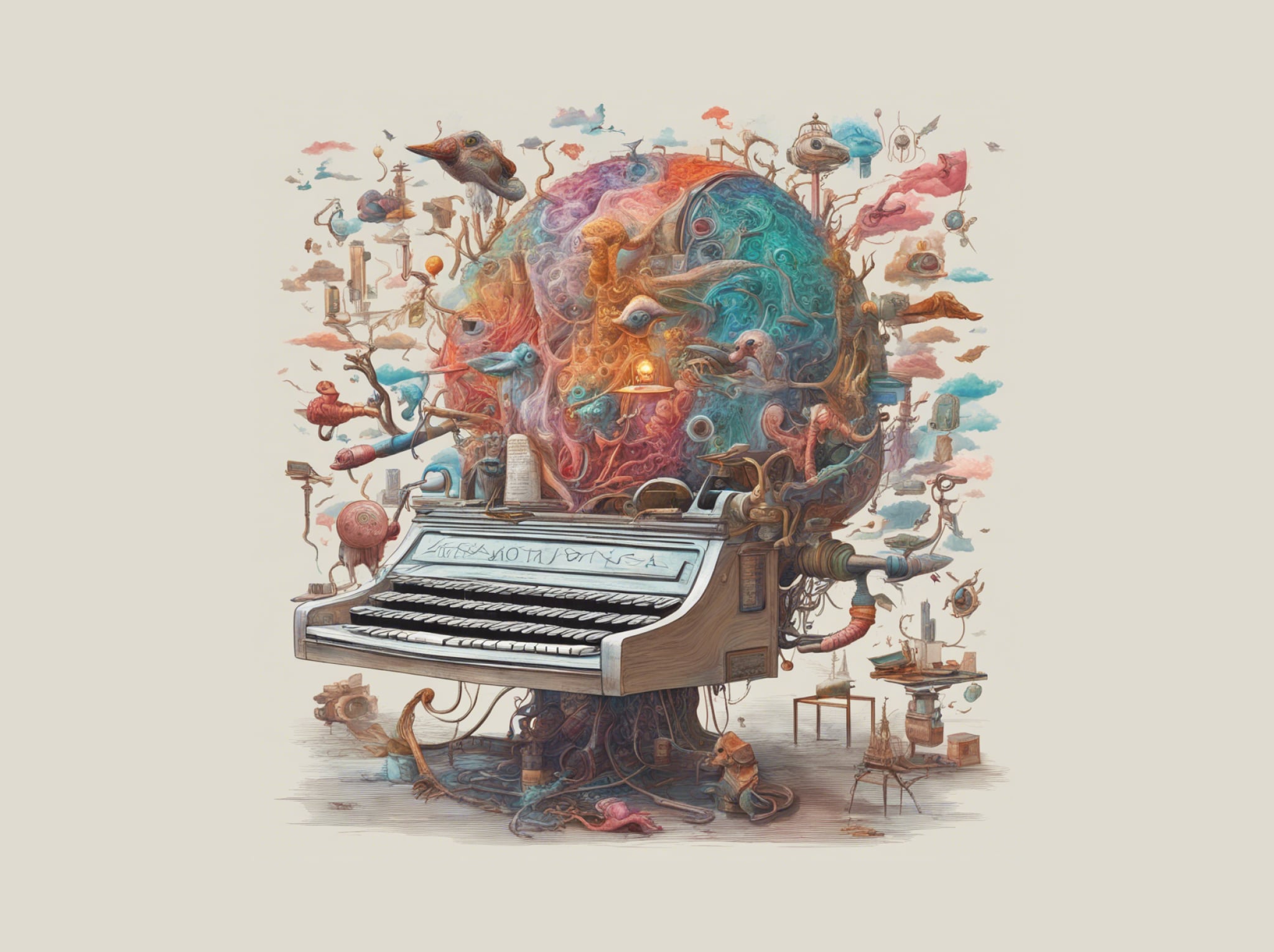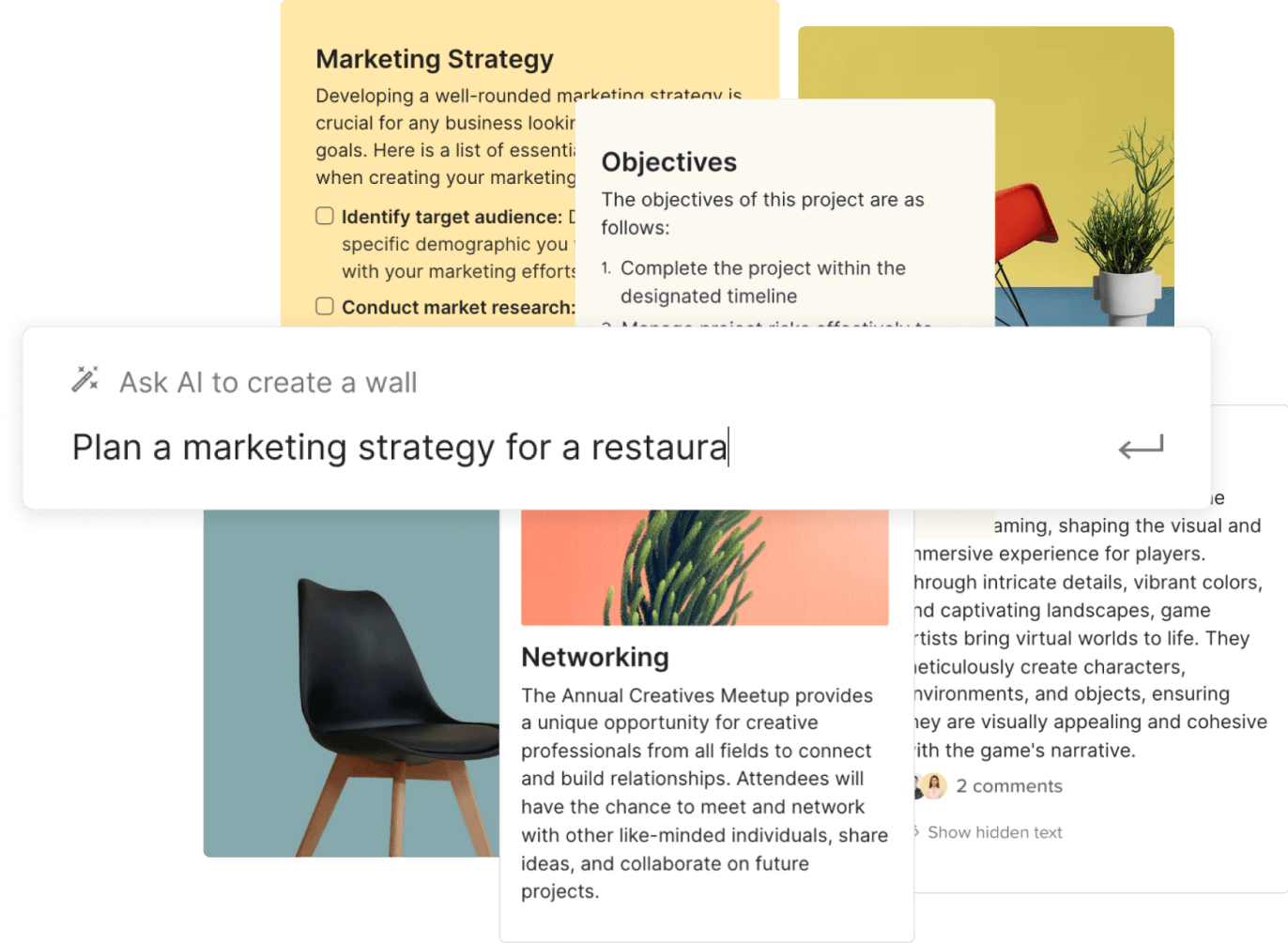One of the most obvious applications of the early generative AI technology all of us now have access to is, of course, content writing. I think many believe AI is writing large swaths of content being deployed nowadays, and that may be true for some use cases. However, I think the more interesting role AI can play in content writing is its ability to collaborate instead of doing all the work for you, necessarily. So let’s go through sort of a broad-to-specific overview of how to implement AI into your content writing.
1. Determining the Scope
If you’ve ever written marketing copy, you know how daunting it can be to come up with the right string of words that piques someone’s interest. The same principle can be applied to just about any type of content writing you’re doing. How can you approach it and execute it from a unique perspective that differentiates your content from the other swaths of content being created on the same or similar topics?
Figuring out the end-goal of what you’re doing from the beginning will help you tremendously in collaborating with AI to get you the results you’re looking for.
- Writing a blog post about the role of AI in content writing (hehe)
- Forming an email campaign about a new product line
- Outlining a YouTube video script about how to make a website landing page
- Creating a Facebook ad campaign to build brand recognition
- Developing a press release for a large company change
- Detailing a business plan for a coffee shop
All of these uses require a different approach and writing style. It’s important to not only know the format of your written content, but the point of the content as well. It will help the AI collaborate with you if it knows what you’re trying to do.
2. Generating an Outline
While some use cases may not really need an outline given their brevity, for those that do, asking the AI to come up with some ideas around your topic can really help get some wheels turning in your noggin.
What are some important aspects of making a successful landing page?
While I’m not specifically asking for the AI to come up with an outline for me, I am essentially asking it to give me some ideas for sections of content to build off of. For example, ChatGPT gave a few notable ones such as keeping forms as simple as possible, easy to find testimonials, and optimizing for loading speed. With that, I can start generating an outline for my content that I find to be unique and effective. At the same time, the speed in which it took me to concoct points of interest in my piece was greatly reduced given the collaboration and brainstorming with AI.
3. Is it Copying if I Write it in My Own Words?
Particularly, during times of serious writer’s block, it might be easiest to ask the AI to come up with the content you’re looking for and then just simply rewrite it in your own words. At the least, this can give you a place to start from. As you’re rewriting, you’ll find your own voice starts to take over and you’ll want the phrasings and flow to match your own instead of the AI’s. However, the AI provides a kind of rubric to follow as you rewrite.
Write me an Instagram description to promote the freshly made pasta being sold in my shop.
4. Restructuring
Not only that, but in the opposite manner as well. Let’s say you’ve written a lengthy paragraph about why freshly made pasta is so much better than anything you’d ever get dry at the supermarket. But you know the paragraph reads in a kind of dull manner and you’d rather it be suited better for an Instagram description. The important part is you’ve already done the hard bit of conceptualizing it.
Can you rewrite this paragraph into a bulleted list with emojis for an Instagram description?
AI is surprisingly useful in its ability to take what you give it and shape it to any parameters you need. This method can also be really useful for hitting particular word counts or sentence quantities. Just give it what you have and specify what you’d like it to change!
5. The Elusive “Hook”

Writing a formidable “hook” (the thing that grabs a person’s attention enough to continue with your piece of content) is quite possibly the most difficult part about content creation. It’s a combination of exciting words and subject know-how to differentiate yourself as the right resource that someone is looking for. They mainly focus on evoking emotions, particularly surprise or just simply intrigue. It’s viewed as a sort of make-or-break aspect of content generation across any application. AI can provide a strong starting point for any hook.
Can you help me make a catchy hook for a facebook ad campaign promoting fuzzy socks?
This is what ChatGPT came up with:
“Step into Cozy Bliss! 🧦✨ Indulge your toes in the warmth of our luxurious fuzzy socks – your perfect companions for chilly days and snug nights. Say goodbye to cold feet and hello to comfort! 🌬️❤️ #WarmYourSole #FuzzySockHeaven”
While I’m not personally a fan of “Cozy Bliss”, I am a big fan of the “#WarmYourSole” hashtag suggestion. This brings up two more important aspects to cover; iteration and research.
6. Try and Try Again
As we’ve discussed before here on Walling, one of the fantastic things about using AI as a collaborator is its conversational nature. It’s not inherently forgetting everything you’ve told it (unless you’re starting a new chat or resetting the input in some way). So, in our pursuit of the perfect hook for our fuzzy socks, we can ask it to come up with some new ideas.
I’m not a huge fan of “Step into Cozy Bliss!” Can you come up with a handful of different introductions to that hook?
Some of the new options it gave are:
- “Wrap Your Feet in Pure Comfort! 🧦✨”
- “Elevate Your Comfort Game! 🧦✨”
- “Chase Away the Chill with Pure Softness! 🧦✨”
- “Warmth Redefined! 🧦✨”
Okay, we’ve determined the AI really likes the sock and star emojis. But also I really like 3 and 4. They feel like they appeal to two different audiences though, 4 being more luxury, and 3 being more fun-loving. Yet another important aspect to keep in mind when creating content.
But just keep in mind you can really drill into responses from AI. The more questions you ask about its responses, the deeper the response gets which can be great in leading you to something truly unique.
7. That Hashtag Must Already be Taken… Right?
Another big one we’ve discussed here at Walling is the need for research and double-checking everything. While AI is great for helping you come up with content and ideas, it’s also great at regurgitating things verbatim that it’s found elsewhere. Case in point, the “#WarmYourSole” hashtag I loved is likely not an original idea. There’s a couple easy ways to check this.
Firstly, I checked Instagram for the hashtag. Only 231 posts with it. Okay… not really that many at all. However, after looking at a few photos, I see there’s a company with a product called “Warm Your Sole.” Looking at the company’s website, it doesn’t appear to be selling that product anymore.
Next, I googled the hashtag. There appears to be one other company selling a product with that as its title or tagline. But overall, there were scant results being brought up for it, which is promising. Given the lack of others using it, you could somewhat easily use this hashtag as a piece of your marketing campaign so long as you’re aware that others do exist.
All this to say, it’s crucial to thoroughly research anything AI suggests before investing significant resources, such as thousands in ad spend. If it turned out Bath and Body Works had a product called this, well you’d know it’s not really worth competing with. Aside from this niche example, just make sure you’re doing your research on anything that came from the AI that you’re hanging your hat on.
8. What Do You Think of My Writing, AI?
Another great use for AI is proofreading for clarity and grammar. At the least, it’ll make a few suggestions Microsoft Word won’t. And as an added bonus, you’ll get a little pat on the back from the AI for your well-constructed writing!
Can you give me some feedback on my writing?
It’ll then ask you for your writing, which you can copy and paste into the chat. Quickly, it’ll give you some feedback and suggestions on your writing style and areas where it might be unclear. Then you can follow that up with asking it to check for any errors.
Can you check for any grammatical errors or suggested edits?
By the end, you’ll have a written piece that has at least been reviewed a bit more than it would be otherwise. Granted, I did wind up getting some suggestions that were just bad, so analyze and deploy based on what you think is correct. There are also tons of AI writing tools out there such as Grammarly that specializes in writing analysis and goes farther than just ChatGPT. If this is something you plan on incorporating regularly into your workflow, it may be worth checking out!
9. This Piece of Content Contains Multitudes
Okay, last one. I promise! Something else to keep in mind, similar to restructuring, is you can ask AI to turn one form of content into any other form of content.
Can you take this blogpost and make it more conversational for a YouTube video script?
If you’ve already put in the work of making the content, you don’t necessarily need to remake it yourself into a different form. The AI is actually very good at doing this for you as you’ve already got everything it needs.
Can you take this blogpost and break it into several different social media post topics?
This not only saves you a bunch of time, but it also starts building upon the idea of content distribution for yourself or your brand. You don’t need to be making different pieces of content for every distribution channel. You just need to focus on making good content and reformatting it to work on different channels. And AI can assist you with that.
AI Is Your Friend in Content Generation
I hope this gave you some ideas on how you can not only collaborate with AI, but also incorporate AI into your content generation strategy. At the end of the day, it is a technology that will only get better over time and is already pretty powerful as it stands right now. Learning to integrate it now will only make you more productive in the interim and more prepared for the future as it comes.




